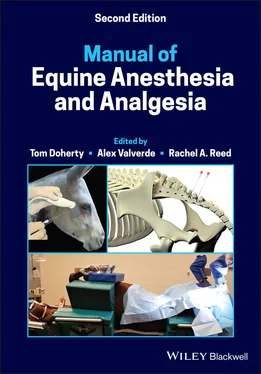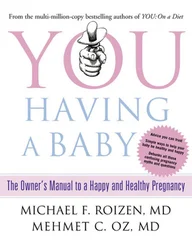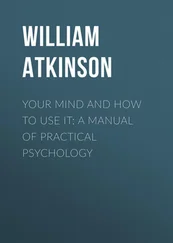After release, ACh persists in the tissue for a few seconds, then most of it is split into an acetate ion and choline by the enzyme acetylcholinesterase, which is present in the terminal neuron and the surface of the receptor organ.
C Synthesis, duration of action, and removal of NE
Synthesis of norepinephrine from phenylalanine begins in the axoplasm of the terminal nerve endings of adrenergic nerve fibers and is completed inside the vesicles.
In the adrenal medulla, this reaction goes one step further and transforms about 85% of the norepinephrine into epinephrine.
After secretion, NE is rapidly (within a few seconds) removed from the secretory site and taken back to the vesicles, either unchanged or metabolized by monoamine oxidase (MAO). If it reaches the circulation, NE, and also EPI, are metabolized by MAO and catechol‐O‐methyltransferase (CMT) in the liver and kidney.
D Receptors on the effector organs
Cholinergic receptors are subdivided into muscarinic and nicotinic .
Muscarinic receptors are present in all effector cells stimulated by the postganglionic PNS neurons, as well as in those stimulated by the postganglionic SNS cholinergic neurons. Subtypes of muscarinic receptors are described in Table 7.1.
Nicotinic receptors are found in the synapses between the preganglionic and postganglionic neurons of the SNS and PNS, and at the neuromuscular junction.
ACh is the neurotransmitter at all cholinergic receptors.
Adrenergic receptors are subdivided into alpha (α 1and α 2), beta (β 1and β 2), and dopaminergic (DA).
Norepinephrine (NE) excites α receptors more than β receptors.
Epinephrine (EPI) excites α and β receptors approximately equally.
There are five subtypes of dopaminergic receptors, D1 to D5. Dopaminergic receptors are primarily present in the CNS but are also present in the periphery.
Dopamine can act by three mechanisms:It modulates the release of norepinephrine from adrenergic neurons.It activates α and β receptors.It activates dopaminergic receptors.
Table 7.1 Muscarinic receptor subtypes.
|
M1 |
M2 |
M3 |
M4 |
M5 |
| Location |
CNSStomach |
HeartCNS |
CNSSalivary glands; airway smooth muscle |
CNSHeart? |
CNS |
| Clinical effects |
H +secretion |
Bradycardia |
Salivation |
? |
? |
III Function of the adrenal medulla
A SNS innervation of the adrenals
Stimulation of the SNS nerves to the adrenal medulla causes large quantities of EPI and NE to be released into the bloodstream.
Approximately 80% of the secretion is EPI and 20% is NE.
B Effect of NE release from adrenals
The circulating NE causes constriction of most blood vessels, increased activity of the heart, inhibition of the GI tract, and dilation of the pupils.
C Effect of EPI release from adrenals
EPI, because it has greater affinity for β receptors, has a more profound effect on cardiac stimulation than does NE. However, NE is a more potent vasoconstrictor.
NE and EPI increase systemic vascular resistance, mean arterial pressure and cardiac output through their α‐ and β‐receptor activity. Heart rate is more likely to increase with EPI due to a stronger chronotropic effect, whereas it decreases with NE, as a result of a baroreflex in response to the increase in systemic vascular resistance.
IV Autonomic effects on the cardiovascular system
A The heart
SNS stimulation increases heart rate and contractility.
PNS stimulation decreases heart rate and can result in asystole.
Postsynaptic α2 receptors exert a positive inotropic effect and contribute to development of cardiac arrhythmias.
Postsynaptic β1 receptors and presynaptic β2 receptors play similar roles in increasing heart rate and myocardial contractility.
SNS stimulation constricts most systemic blood vessels, especially those of the abdominal viscera and the skin of the limbs.
PNS stimulation has almost no effect on most blood vessels.
Presynaptic α2 vascular receptors mediate vasodilation, whereas postsynaptic α1 and α2 vascular receptors mediate vasoconstriction.
Postsynaptic α2‐vascular receptors predominate in the venous circulation.
Postsynaptic α2‐receptor activation causes arterial and venous vasoconstriction.
Postsynaptic β receptors are predominantly β2 and mediate vasodilation.
C Effects of SNS and PNS stimulation on arterial pressure
SNS stimulation increases cardiac contractility and systemic vascular resistance, which usually causes the arterial pressure to increase greatly.
PNS stimulation decreases cardiac contractility, but has virtually no effect on systemic vascular resistance.
The usual effect of PNS stimulation is a slight fall in pressure.
D Cardiovascular autonomic reflexes
Arterial baroreceptors are stretch receptors located in the carotid sinus and aortic arch to detect changes in arterial blood pressure.
When arterial blood pressure increases, arterial baroreceptors are stretched and signals are transmitted to the brain stem, which inhibit the SNS impulses to the heart and blood vessels, and increase vagal tone on the SA node of the heart, which results in bradycardia to correct the increase in pressure (baroreceptor reflex).
When arterial blood pressure decreases, arterial baroreceptors sense the decrease in tension and signal the vasomotor center to facilitate SNS activity in the heart and blood vessels and decrease vagal tone, causing an increase in heart rate to correct the decrease in pressure.
Venous baroreceptors, located in the right atrium and great veins, increase heart rate when the right atrium is stretched by increased filling pressure (Bainbridge reflex).
V Autonomic effects on the pulmonary system
Muscarinic receptors mediate bronchoconstriction and increase mucus secretion.
β2 receptors mediate bronchial smooth muscle relaxation and increase mucus secretion (see Table 7.2).
VI Pharmacology of the ANS
A Drugs that act on adrenergic effector organs (sympathomimetic drugs)
Adrenergic agonists include vasopressors (e.g. phenylephrine) and inotropes (e.g. dobutamine).
Most adrenergic agonists activate both α and β receptors, with the predominant pharmacologic effect being the expression of this mixed receptor activation (see Table 7.3). Table 7.2 Comparative pharmacology of selective β2 adrenergic bronchodilators.Agentβ2 selectivityPeak effect (minutes)Duration of action (hours)Albuterol+++++30–604Metaproterenol+++30–603–4Terbutaline++++604Salmeterol++++60>12Clenbuterol++++30–608–12 Table 7.3 Principal sites of action of adrenergic agonists.Agentα1α2β1β2DA1DA2MechanismPhenylephrine+++++?±000directNorepinephrine+++++++++++++000directEpinephrine+++++++++++++++00directEphedrine++?+++++00indirect + directDopamine+ to +++++?+++++00directDobutamine±?++++++00directIsoproterenol00++++++++++00direct+ = increase, − = decrease, 0 = no change.
Hemodynamic effects evoked by adrenergic agonists include changes in heart rate (chronotropism), cardiac contractility (inotropism), conduction velocity of the cardiac impulse (dromotropism), cardiac rhythm, and systemic vascular resistance (see Table 7.4).
Читать дальше












